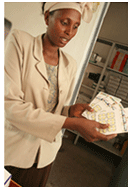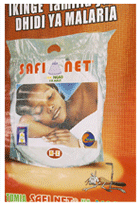
In recent years, the renewed focus on eliminating malaria worldwide has been
accompanied by a rapid increase in the measurement of key malaria indicators through nationally representative
household surveys. These Malaria Indicator Surveys (MIS) measure indicators related to the
Roll Back Malaria (RBM) Global Malaria Action Plan, the Millennium Development Goals (MDG),
and the President's Malaria Initiative (PMI) targets.
Information is collected on the ownership and use of insecticide-treated mosquito nets (ITNs), indoor
residual spraying (IRS) of insecticides, prompt and effective treatment of fever in young children,
and the prevention of malaria in pregnant women. Most MIS surveys also include biomarker tests for anemia and
malaria.
|

To date, organizations providing technical assistance to in-country implementing partners are The DHS Program, PATH-MACEPA, the Malaria Consortium,
CDC, and
the Carter Center.
In addition to Malaria Indicator Surveys, estimates of malaria indicators are available from a large number of
national household surveys. For data and reports from malaria endemic countries, Demographic and Health Surveys (DHS) and UNICEF Multiple Indicator Cluster Surveys (MICS) are available on the
The DHS Program and MICS websites, respectively.
|




